First of all, a very organized designer may provide you with a list of information they need from you in order to design your logo or ad. But if they don’t provide you information, there are several things that are important for you to know.
Project Information:
1. Business cards - Provide the final copy for your contact information, your name and company name. Also provide a vector file of your logo. When you’ve signed off on your design, you are responsible for any typos or incorrect information. So make sure you’ve read everything carefully because once you’ve approved your business card, if it comes back with the wrong phone number, you’ll eat the cost, not the designer. We like to joke that designers don’t have ESP although lots of clients tend to think we do. Business cards normally take about 10 business days to print so if you’re in a hurry, expect to pay a rush fee for printing that is approximately 50% more.
2. Logos - If you are going to have a logo created for your business or organization, make sure that your designer provides you the final logo in a vector format file. Keep in mind that you won’t receive the font files with your logo design because fonts are copyrighted and a designer is not legally allowed to give you a font, only the outlines of it. When you receive a logo file and decide not pay the designer, the logo is still the property of the designer. Also make sure that you receive your logo in black & white, PMS or spot color format as well as in a 4-color process format. If you have more than 3 colors, you don’t need it in spot colors unless you are requiring specific colors for your entire logo.
3. Brochures/Catalogs - While our company writes custom content, most designers are not writers. So you’ll need to provide a designer with text that is completely edited and spell-checked. Don’t ever expect a designer to do these for you unless you are paying an additional fee. Just because someone is a designer, it doesn’t make them a professional in writing, editing and spelling. Also when you receive a quote, make sure it states whether or not photos are included in the design/layout and how many.
4. Ads - Not all designers write creative copy for ads either. So make sure you provide the copy you want on your ad and the same goes for providing photos. Your designer will also need to have the specifications of your ad design such as: full-color or black & white, the bleed, the live area and the physical size. They’ll also need to know the DPI (Dots per inch) and where to email your final ad design.
General Information:
1. Don’t ever download images from the internet and assume they are safe to use. At least 95% of the images you find online are already copyrighted. The best place to find affordable and a wide-variety of images is at istockphoto.com. If your designer purchases any photos for you on this website, you don’t have the rights to use it again. But if you purchase it, you can use it for several of your design projects.
2. It isn’t a good idea to ask a designer to make a photo larger in size if it’s not already large enough. Making a photo larger than the DPI allows it to be is called ‘interpolation’ and it causes a photo to become what is referred to as ‘pixelized.’ Doing this makes your project look unprofessional. Now that I’ve just told you not to do this, it is possible to make a photo larger without making it look bad. If you have a nice and clear photo that’s over 5”x5” in size, you might be able to increase the size another 25%. Just don’t expect to be able to do this all the time and trust your designer if they say it doesn’t look good to increase the size.
3. When the design process has started, unless your designer has told you otherwise, it’s best not to make drastic changes. Any time you make changes, no matter how small they may seem to you, your designer may have to redo the whole process from the beginning. It delays not only your schedule, but it messes up a designer’s production schedule. Worst of all, it’s likely to incur extra charges for you.
4. It is never advisable to design on your own, especially if you don’t know what you’re doing, but it may help your pocket book and your designer if you already have a rough sketch, edited or you have firm research that shows your market.
5. When you receive EPS, JPG, PSD, AI and Acrobat files from a designer, even if you don’t own the software that allows you to open them, don’t delete these files. Save them in your archives on your computer or on a CD or DVD because any time you need something designed, you’ll need to email these files to a designer.
Additional Information:
1. Registering and/or copyrighting your logo artwork is very affordable. It costs roughly $30 to $40 if you go directly to the United States Copyright Office at www.copyright.gov. Trademarking your business name with your logo is an entirely different ballgame and is much more expensive. You can also do this directly through the government here in the United States at www.uspto.gov/smallbusiness/trademarks.


